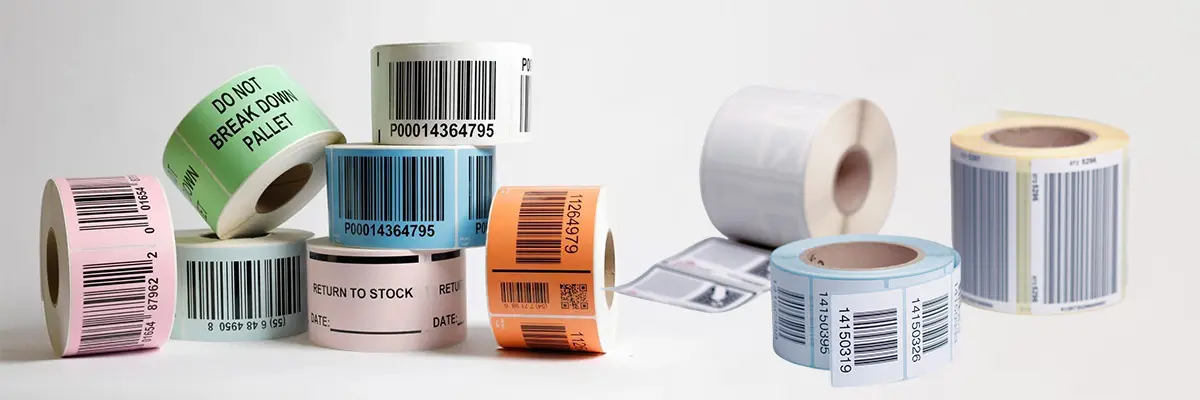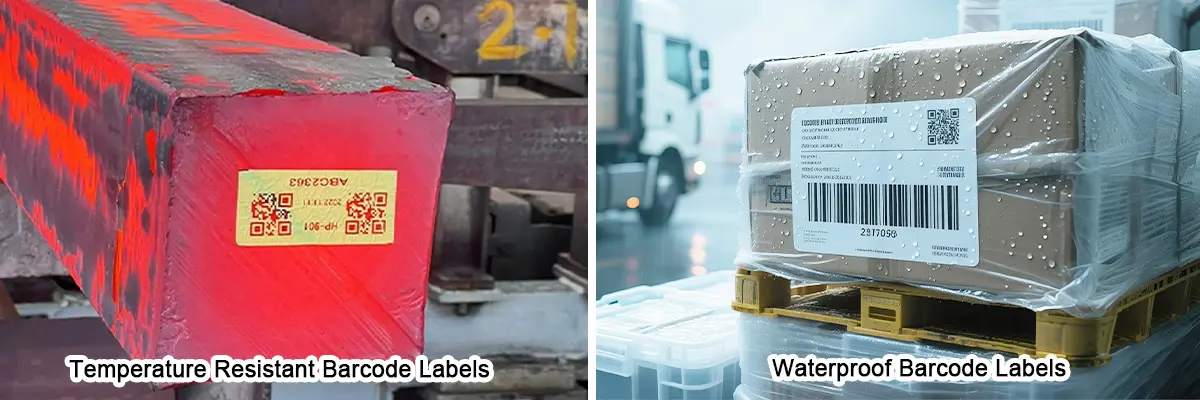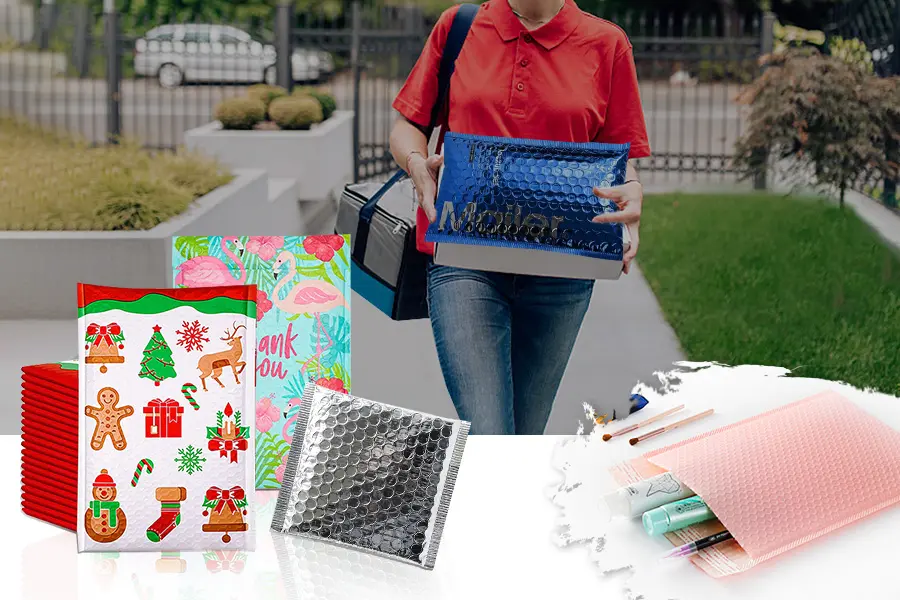How to Choose the Right Printable Barcode Labels for Your Industry
2025-08-14
If you’ve ever had a barcode that wouldn’t experiment proper when you wanted it, you know the frustration. Whether you run a warehouse, manage retail stock, or want asset monitoring for workplace system, printable barcode labels are the silent heroes of corporation. Yet, many companies warfare to pick out the proper size, cloth, or printing method.
At Sailingpaper, we believe barcode labels should work with you, not against you. This guide isn’t just a catalog of products it’s a roadmap to solving your barcode label headaches for good. We’ll walk through real-world problems, offer tested solutions, and give you insider tips so your labels scan perfectly every time.
1.Understanding the Real Challenges with Barcode Labeling
Why Standard Labels Fail in Real-World Use
Imagine printing a batch of barcode labels that look best in your workplace, however inside the warehouse, they fade inside days because the temperature from the equipment is too excessive. Or maybe your shop freezer keeps moisture on the labels, making them peel off. These are not unusual complaints from agencies using the wrong barcode label materials. Printable barcode labels provide you with the ability to create custom product tags on call for, saving time and decreasing waste.
Standard paper-based labels are fine for short-term use in mild environments. But once you’re dealing with high humidity, rough handling, or fluctuating temperatures, you need more durable options like temperaturef resistant barcode labels or barcode labels waterproof.
The biggest failure points for standard labels include:
● Fading ink in sunlight or temperature
● Peeling edges from humidity
● Scratched surfaces in high-contact areas
● Unscannable codes from poor printing or label stock mismatch
At Sailingpaper, we often hear from customers who’ve spent more on replacing bad labels than they would have on choosing the right material from the start. That’s why matching your label to your environment is key.

2. Common Complaints from Businesses About Barcode Labels
Here’s what we hear most often from frustrated customers:
1.My barcodes won’t scan: Often due to poor printer settings or mismatched barcode label stock.
2.The labels keep falling off: Usually caused by low-quality adhesive or improper surface prep.
3.They fade after a week: Common with cheap thermal labels in sunlight or temperature.
4.We have too many label sizes to keep track of: A lack of standardization in barcode label size creates waste and confusion.
We’ll solve each of these in the sections ahead, so you don’t just know what to buy you know why it works. With printable barcode labels, you can adjust your label size, design, and data instantly to match changing inventory needs.
3. Choosing the Right Barcode Label Size for Your Needs
Small Barcode Labels vs. Large Labels – Which Works Best?
You might think bigger is always better, but with small barcode labels, you can fit them on tighter surfaces like retail tags, electronics, or small boxes. Larger labels, on the other hand, provide space for additional text, branding elements, or safety icons. Selecting the right material for your printable barcode labels is crucial to ensure they remain scannable, even in challenging conditions such as extreme temperatures, moisture, or frequent handling.
Here’s a quick comparison:
|
Label Size |
Best For |
Pros |
Cons |
|
Small (1x1 inch or less) |
Jewelry, electronics, asset labels |
Fits in tight spaces, discreet |
Less room for text/branding |
|
Medium (2x1 barcode label) |
Warehouse bins, shipping boxes |
Balance of size & readability |
Limited branding space |
|
Large (over 3 inches) |
Pallets, equipment |
Highly visible, room for details |
May not fit small products |
At Sailingpaper, we help customers choose based on scanning distance, available surface space, and industry standards.
4. Matching Barcode Label Size to Your Product & Industry
For manufacturing environments exposed to extreme temperatures, heat resistant barcode labels ensure accurate scanning and long-lasting durability without fading or peeling. We partner with trusted barcode labels manufacturers to ensure high-quality, durable, and precisely printed labels for all our inventory needs. We partner with trusted barcode labels suppliers to ensure our products are accurately tracked and efficiently managed.
Different industries have different size norms:
● Retail → Small barcode labels for price labels
● Warehouse → Medium barcode labels for warehouse inventory
● Manufacturing → Larger labels for machinery tracking
● Healthcare → Small, precise labels for medical supplies
Pro tip: Always leave a quiet region around your barcode to make certain scanners pick out it up speedy. This is in which clean barcode label rolls are available on hand they assist you to manipulate the print vicinity flawlessly.

5. Navigating Barcode Label Materials and Durability
5.1 Temperature Resistant Barcode Labels – When Are They Necessary?
If your commercial enterprise offers with excessive-temperature environments like manufacturing vegetation, bakeries, or car workshops preferred labels gained’t cut it. Temperature resistant barcode labels are made with special adhesives and coatings that won’t curl, fade, or soften beneath severe situations.
For example, one of our clients in a steel fabrication shop switched to temperature resistant labels after their standard ones kept turning brown near furnaces. The result? Zero scanning issues for over a year.
5.2 Waterproof Barcode Labels – Avoiding Smudges and Fading
Moisture is another label killer. Whether it’s rain all through shipping or condensation in bloodless garage, water can wreck preferred paper labels. That’s where barcode labels water resistant come in they use artificial substances like polyester or vinyl with sturdy adhesives that received’t peel.

Industries that rely on waterproof labels:
● Frozen food packaging
● Outdoor construction
● Marine shipping
● Garden centers
5.3 Thermal Transfer vs. Direct Thermal – Pros and Cons
When it comes to barcode printing labels, the print method matters as much as the material.
Thermal Transfer:
● Uses a ribbon to transfer ink onto labels
● Long-lasting, resistant to temperature and light
● Best for asset barcodes labels and long-term storage
Direct Thermal:
● Uses temperature to create the image directly on the label
● No ribbon needed (cost-effective)
● Best for short-term uses like rollo direct thermal 2x1 barcode labels
At Sailingpaper, we recommend thermal transfer barcode labels transfer for durability and direct thermal for speed and cost savings.
6. FAQs
1. What is the pleasant barcode label size for small products?
If you’re labeling small gadgets like electronics, cosmetics, or earrings, small barcode labels are the manner to move. A not unusual choice is a 2x1 barcode label as it offers enough space for the barcode and a piece of product information while nevertheless becoming well on small packaging. At Sailingpaper, we recommend always checking your scanner’s ability to read smaller barcodes earlier than mass printing.
2. How can I ensure my barcode labels don’t fade or smudge?
Fading often takes place whilst labels are exposed to daylight, temperature, or moisture. To save you this, pick temperature resistant barcode labels or barcode labels water-proof crafted from artificial substances. If you print in-residence, use a thermal transfer printer with superb barcode label stock to get the maximum durable print.
3. What are Printable Barcode Labels?
Printable barcode labels are adhesive tags that feature scannable barcodes, allowing products, assets, or documents to be tracked and identified easily. They can be printed using standard label printers or specialized barcode printers.
4. Can I buy barcode labels in rolls for high-volume printing?
Yes! Barcode labels rolls and blank barcode label rolls are perfect for businesses printing large batches. Buying in rolls ensures consistent sizing and is cost effective. This is especially useful for barcode labels for warehouse inventory systems where speed and volume matter.
5. Are reasonably-priced barcode labels well worth it?
Cheap barcode labels may be a money-saver for short-time period projects, however for lengthy-term or harsh environments, they might cost greater ultimately because of reprints and scanning screw ups. Always balance rate with first-class Sailingpaper gives price range-pleasant barcode label answers without compromising performance.
7. Conclusion
At the end of the day, printable barcode labels are greater than just barcode sticker labels they’re the spine of product monitoring, inventory manipulate, and smooth business operations. Yet, many corporations waste money and time because they select the wrong barcode label length, pick labels which could’t live to tell the tale their environment, or neglect small but critical info like adhesive energy and printing approach.
Contact Us
Got a barcode label hassle you simply can’t resolve? Or maybe you’re not sure whether you need small barcode labels, temperature resistant barcode labels, or water-proof barcode labels for your specific surroundings? We’re right here to help.
At Sailingpaper, we concentrate on barcode label solutions that paintings within the actual international now not simply on paper. Whether you’re looking for guidance on choosing the right barcode label size, placing bulk orders for barcode label rolls, or getting tips on printing with Rollo barcode labels, we’ll guide you through every option so you can make the best decision.






 Thermal labels
Thermal labels